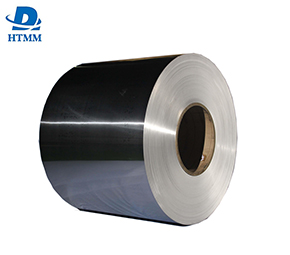This article explores the differences between 8011 aluminum foil and 8079 aluminum foil as products that are representatives of the family of flexible packaging aluminum foils, including a review of their physical properties, applications, and typical end-uses as a food grade packaging material.
The major differences between 8011 aluminum foil and 8079 aluminum foil
Both 8011 aluminum foil and 8079 aluminum foil are common raw materials of aluminum foil coils processed into flexible packaging. However, they are different from each other based on their composition, mechanical strength, and ductility.

1. Composition and Mechanical Properties:
8011 aluminum foil has higher amounts of iron and silicon, and therefore has better mechanical performance (higher strength and failure load). It is generally more formable and slightly harder than 8079.
8079 aluminum foil, however, has a higher amount of iron and manganese, and therefore has greater ductility. This means it can be deformed more prior to cracking, which may be necessary for certain bending and folding requirements included in some high-speed packaging applications.
2. Barrier and moisture barriers:
Both 8011 and 8079 aluminum foil can provide excellent barrier properties, it is important to note that 8079 aluminum foil has superior moisture and gas barrier properties typically than any 8011 aluminium foil because it has a finer grain structure. Because of this, 8079 is much more appropriate in ultra-high barrier applications.
8011 aluminum foil provides suitable sealing and barrier protection but may be selected if the mechanical strength and formability of the aluminum foil is preferred, more than the extremely high barrier protection levels.
3. Surface quality and printing capabilities:
8079 aluminum foil typically has a better surface finish and gloss that provides better printed and laminated surfaces, since these are typically expected in branded food packaging.
8011 aluminum foil has satisfactory surface properties, however, further surface treatments may be necessary for some print quality needs.
Can flexible packaging exist without aluminum foil?
To appreciate the unique role of aluminum foil for flexible packaging, we must first consider the base properties of aluminum foil. In flexible packaging, aluminum foil has the following basic functions:
Barrier Protection: It provides a barrier to oxygen, light, moisture and contaminants .
Temperature Resistance: It is resistant to high and low temperatures, which are ideal for frozen and heat sealed food packaging.
Light Weight / Easily Formed: It is light weight and easy to form and can take on various product shapes while being compact.
Sustainability: It is completely recyclable, provided additional value in eco-conscious purchaser markets.
Without using aluminum foil, flexible packaging loses one of its principle functional layers. Other alternatives to aluminum foil, like plastic film or even aluminized PET, may have some of the barrier properties , but they do not provide the completely protection that aluminum foil offers through flexible packaging. Without aluminum foil, flexible packaging will have diminished shelf life and product integrity, as well as consumer safety.
Food Packaging Applications
8011 aluminum foil and 8079 aluminum foil have many uses in food packaging:
Yogurt and dairy product lids
Retort pouch packaging
Candy wrappers and chocolate wrappers .
Medical blister packaging (non-food).
Specifically, aluminum foil coils may be processed into thin laminates, which can be combined with plastic or paper layers to create multi-layer flexible packaging that blends performance and hygiene.
Conclusion: Selecting the Appropriate Flexible Packaging Aluminum Foil All-in-all, in considering 8011 and 8079 aluminum foils for flexible packaging, the choice ultimately depends on the specific application:
When there is a need for enhanced mechanical strength, and formability, use 8011 aluminum foil, particularly in lid applications and for tougher packaging.
When ductility is more important, and superior barrier properties are required, such as in performance food packaging and pharmaceutical foils, use 8079 aluminum foil.
Both alloys have played an important role in the continued innovation and performance of aluminum foil in flexible packaging which ensures that we keep today’s foods safe, fresh and attractive. Aluminum foil coils in both alloys are widely available to allow manufacturers to develop custom solutions to meet the strictest requirements of today’s market.
In the end, it is indisputable that the addition of flexible packaging aluminum foil has advantages, but is also critical. Without flexible packaging aluminum foil, the protective, visual appeal and sustainable aspects of flexible packaging would be greatly diminished, so aluminum foil must always be considered key material in the packaging industry.





